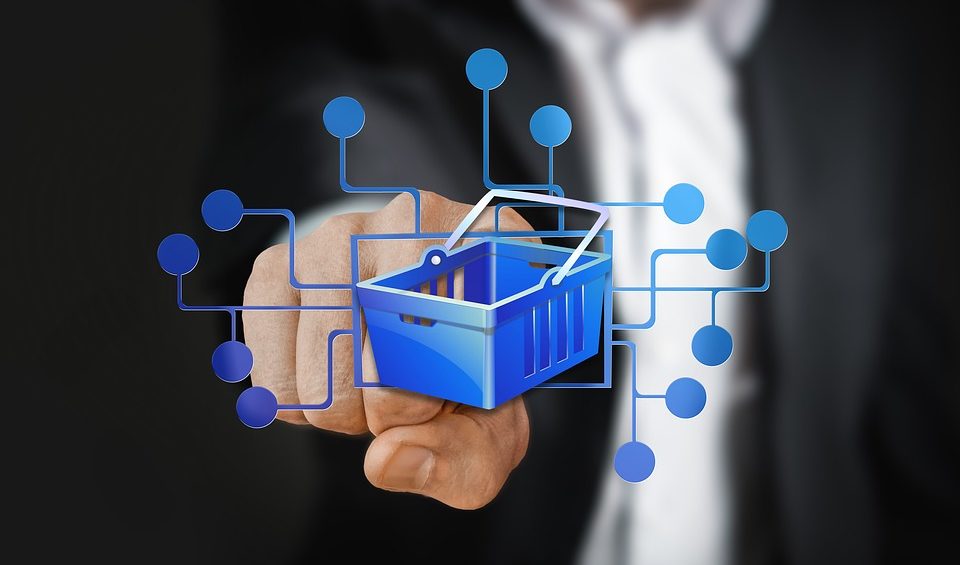
Despite a roller-coaster run on Wall Street, the back-and-forth with China on tariffs, and even a late Thanksgiving, overall spending this holiday season is expected to reach new milestones. In fact, forecasters are suggesting this may be the first time the US crosses the $1 trillion mark for the season. Even the most conservative predictions call for a 3-4% (YoY) increase in sales overall.
Digital sales will be huge, with the fastest-growing retail venue being mobile, or mCommerce. Some enthusiastic prognosticators are saying that half or more of U.S. online holiday retail sales will originate on a mobile device.
Having said that, here’s something else to consider: while mCommerce represents half of total eCommerce, that channel still accounts for 10% or less of all retail revenue.
A good amount of attention gets focused on eCommerce. This is both because of its explosive (and ongoing) growth, and because it’s still relatively new. Headlines regularly point out all the established retail chains that are calling it quits, but the fact of the matter is, brick-and-mortar stores aren’t going away any time soon. In fact, even online giants like Amazon are expanding into physical stores to remain competitive.
Am I implying we can safely ignore—or at least downplay—eCommerce? Of course not; Amazon opening physical locations is not the company’s way of admitting that old-school business models were better. If anything, we should take away the exact opposite lesson.
The new Amazon locations aren’t traditional department or grocery stores. Instead, their goal is to take conventional retail to the next level.
Get What You Need and Get Going
The company took lessons learned from its online business—namely, that shoppers care about price and convenience—and applied them to brick-and-mortar outlets. The result is the discovery of new territory for retailers as a whole.
Take, for example, self-checkout: some customers love it, while others hate it with a passion. Amazon, however, is asking “Why do we need checkout at all?” Their Amazon Go concept stores employ sensors and cameras to track what customers add to their baskets. This lets customers skip the checkout process entirely, with everything simply billed through one’s Amazon account.
Currently, Amazon Go stores come in two flavors: one offers a limited selection of groceries, the other emphasizes prepared foods. That said, it’s easy to see how the concept could be expanded into a variety of formats, including functioning as a receiving hub for online orders.
Amazon, of course, has already thought of that. The company is currently testing Amazon pickup centers, which function along the lines of a bank or post office. Customers can stroll in, wait in line (we assume there will be lines) until their turn at the window, and pick up a package. Or, hand over a package for return.
That’s it. Two available services, simple and clear.
Brick-and-mortar they may be, but these shops are an EXTENSION to Amazon’s online business, not any kind of replacement for it. They offer customers convenience and a better price option…and Amazon is just getting started.
Amazon Advantage: Existing Infrastructure
At first glance, Amazon would seem to be at a disadvantage in terms of expanding into physical locations. The largest, most well-established retail chains have invested heavily in prime real estate for their stores. Also, while many of these retailers have been called out for not focusing enough on their human resources, they HAVE invested in systems for hiring and turnover of employees. In these and other areas, Amazon is starting from scratch.
The company answers these challenges with a simple mantra: don’t compete, collaborate.
Instead of trying to build an entirely new infrastructure, Amazon is partnering with organizations that have systems already in place. This includes on-campus bookstores operating in cooperation with several colleges and universities, guaranteeing an income stream from text book sales but also creating centrally-located pickup/drop-off centers.
Amazon is also partnering with Kohl’s, selling Amazon devices and accepting returns at some stores. The benefit to both entities is obvious, and for Amazon, this is just the tip of the proverbial iceberg.
The Future Is Still Wide Open
eCommerce is huge; no one is denying that. What’s important to note is that it is just one platform in an increasingly-complex purchasing paradigm. Understanding this is critical for business leaders who seek to grow into the future. Merchants must acknowledge and adjust to the fact that retail isn’t dying, but the old business models are.
Of course, that doesn’t mean that the future of retail is set in stone. The digital revolution is happening now…but that’s not to say that the path can’t or won’t be altered. Consider this:
- 30 years ago, the internet was barely even known, let alone a commerce juggernaut.
- 20 years ago, the idea of millions of consumers shopping from their cell phones—tablets weren’t a thing yet—was an idea at which most people would’ve scoffed.
- 10 years ago, how many folks believed we’d have omnipresent, Star Trek-like computers in our homes that could answer our questions, set schedules, order groceries, and more?
The future of retail obviously isn’t physical. But neither is it digital: from all indications, it’s going to be a combination of the two, with other concepts we haven’t imagined possibly being worked into the mix. Amazon and others are showing us the retail map of tomorrow is still being drawn, and for smart merchants, the future is wide open.
